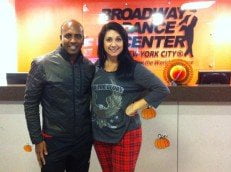“Music is the universal language of mankind.”
Henry Wadsworth Longfellow
In this article we will discuss an experiment that was conducted by the researchers
from Northumbria university where they took 19 males from age groups 18-35 with no
professional dancing experience and made them dance to a simple beat and this all of
this happened in front of a motion capture device which was capturing all the dancing
moments of the person dancing.
After this, Interestingly, 3D generic models were compiled which for these people
dancing and things like amplitude, duration, speed and variability were measured in this
experiment. Then, Came another interesting step in the experiment. 37 women rated
these 3d models for their dance quality and when the results came out, It was amazing
to know that …
But, Before, You read what makes a good dancer, Why don’t we do a small memory
exercise?
So, ready? Just try to think who’s your favourite dancer and why do you like their
dancing style? Okay, Done with that memory exercise?
Asked this question because now that you have re-collected their name and now that in
a minute or two, you will have one of the traits of a successful dancer, can you actually
try to recollect to see if your favourite dancer has that trait or not?
Interesting, right? So, Let’s get started without any further adieu.So, The results came out and a good dancing person was the one whose central body
region variability was higher.
Now, I know you might be tempted to ask what does the central body region include?
So, This includes neck extension, sideways head tilting, head shaking, twisting and
apart from these things there was also one more conclusion that the men who moved
their feet at a higher speed were rated better in their dance quality so this included right
knee bending speed, right knee twisting speed (reference: Business Insider’s Youtube
Channel)
And, If you think this is so much technical, then, hold on because there’s more to follow.
Yes, People who love to dance and study dance , You guys are in for a treat today.
In fact, Nowadays, With the internet and data science taking the world by storm, there is
something else as well which is slowly making its name in the dance sector, and this
phrase is referred to as ‘Dance Science’.
So, a TEDx talk by Karine Rathle at TEDx LSE titled ‘When dance and science meet’
beautifully covers some fascinating pointers and aspects.
Like, She says that by dance science: Professionals of the field focus on enhancing
performance, optimise the dancing potential, Prevent injuries and focus on care of
injuries when they happen.
For eg: When talking about injuries, Karine Rathle shared that dancers get more injured
as compared to soccer players and also longer than soccer players.
Hence, Focusing on the prevention and care of injuries becomes an important aspect of
dance science to maximize a dancer’s potential.
Understanding the main reason behind these injuries is also important in dance science.
And, Not only this TEDx talk, but, there have been a series of amazing resources
available on the internet which give us deep insight about ‘Dance Science’.
One such resource is a video available on ‘Royal Opera House’s Youtube channel
where they talk about ‘Ballet and Brain-The science of how dancers learn
choreography’.Did you know: According to Guinness World Records: The maximum number of robots
dancing simultaneously is 1,372 and this was achieved by TIM S.p.A. (Italy) in Rome,
Italy, on 1st of February 2018.
Reach Us: +91 95001 99088





